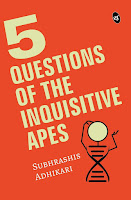At the beginning of the christen era Funan kingdom rose to
power because of its interaction with traders, especially Indian. However, by
the end of 5th century the Funan Kingdom was on a decline. The trade
route has shifted from Isthmus of Kra to Indonesia. Indonesia had the best
spices and the traders now directly contacted them rather than Funan. Ironically,
the prosperity of South East Asia started by the Funan led to their decline,
while Srivijaya (Indonesia) thrived. There was a desperate attempt by Funan
kings to change from a trade dependent economy to one that was agrarian. Many
irrigational canals were built, but could not stop the downfall. By the mid of
6th century Funan Kingdom was dead. The political instability pushed
the Khymer people further inland and they settled around the great lake of
Tonle Sap. It was here that the Khymer Empire began to take its root.
The cult of worshiping phallus, a symbol of fertility, was
already prevalent in ancient Cambodia. Mountains were considered holy, a place
where the ancestral spirit rests. Indian god Shiva, one who resides in the
mountain, and also symbolized by a phallus, was easily accepted by the
Cambodians as their own god. Soon other gods like Brahma and Vishnu were also
assimilated in Cambodian culture. The
promotion of Indic religion was driven by local politics. Control of temples
gave power over submissive local elites, and thus to the people under the elites.
Jayavarman I (657-681) began to unite different Khymer clans by gaining
authority over the local temples. This laid the foundation of devrajya cult in
Cambodia.
Khymer Empire officially began in 802CE under the leadership of Jayavarman II who declared himself a ‘Chakravartin’, or ‘king of the world’ after claiming independence from Srivijaya Empire. His reign began with a consecration ritual in the holy mountain of Mahendraparvata, now known as Phnom Kulen. Mahendraparvata symbolized Mount Meru, the center of the universe. On the summit of the mountain was the abode of Indra, the king of Devas. With the ritual, Jayavarman II became the guardian of law and order, protector of religion, and the defender of the land. The mountain is made of sandstone which would be later quarried to make the temples in Angkor. In this mountain we can still see beautiful of sculptures of Brahma, Vishnu, Lakshmi and thousands of Shiva Lingas.
Khymer Empire officially began in 802CE under the leadership of Jayavarman II who declared himself a ‘Chakravartin’, or ‘king of the world’ after claiming independence from Srivijaya Empire. His reign began with a consecration ritual in the holy mountain of Mahendraparvata, now known as Phnom Kulen. Mahendraparvata symbolized Mount Meru, the center of the universe. On the summit of the mountain was the abode of Indra, the king of Devas. With the ritual, Jayavarman II became the guardian of law and order, protector of religion, and the defender of the land. The mountain is made of sandstone which would be later quarried to make the temples in Angkor. In this mountain we can still see beautiful of sculptures of Brahma, Vishnu, Lakshmi and thousands of Shiva Lingas.
 |
| Angkor's obsession with Lingas |
The kings became divine after their death. Though the royal
temple was dedicated to the living monarch, it also became the mausoleum of the
dead king letting the new king draw on powers of his dead ancestors. This
strengthened the position of the king whose authority could not be challenged
by any outsider. Jayavarman II’s successor Indravarman constructed a stone
temple to shelter the royal Shivalinga named Indresvara linga inside which
resided Jayavarman II. This cult was continued by the successors, though the
specific Indian deity changed over time. Suryavarman II, who built Angkor Wat,
was fond of Vishnu, while Jayavarman VII became a Buddhist and constructed the
Bayon temple complex of Angkor Thom.
The growing Khymer Empire came in conflict with Tambralinga
kingdom. Khymer king Suryavarman I (1002-1050) requested help from Rajendra
Chola of Chola Empire. On hearing the news of the powerful alliance Tambralinga
kingdom asked help from Srivijaya Kingdom. By this time Srivijaya has become the
most powerful empire of South East Asia. Borobudur, the biggest Buddhist
Temple, is an evidence of Srivijaya’s prosperity. The Indian Ocean ship panel
dated to 800CE found in Borobodur is an example of the maritime prowess of Srivijaya
Kingdom. Around the mid of 9th century many sailors from Indonesia started
to populate Madagascar. Srivijaya maintained friendly relationship with Cholas
and the Palas of Bengal. However, their relation with the Cholas soared by
eleventh century. Rajendra Chola led an aggressive naval expedition against
Srivijaya Empire on request of the Khymer king. Srivijaya and Tambralinga were
routed. The defeat lead to Srivijaya’s decline and ended the monopoly they had
over trading. The golden era of Khymer Empire began after the defeat of
Srivijaya as active trading resumed in Cambodia for the first time since the
Funan.
 |
| Angkor Wat |
 |
| Bayon, Angkor Thom |
 |
| Ta Prohm |
Black Death occurred in China around 1330’s affecting trade.
It left its affect in South-East Asia, accelerating the steady decline of
Khymer Kingdom. Thai kingdom of Sukhothai was conquered by a stronger Thai
kingdom of Ayutthaya in 1350. Ayutthaya attacked Cambodia many times finally
succeeding to defeat and take over from them. Angkor was lost from the pages of
history as forests took over. Ayutthaya was the new super-power of South East
Asia.
 |
| Ayutthaya |
Also Check Out: 5 Questions of the Inquisitive Apes
Written by Subhrashis Adhikari
"Engaging and entertaining, this page-turner is remarkable in its narration and will give you a new perspective on various aspects of life. Wellresearched and heartfelt, the encouraging tone throughout the book tries to motivate towards a happier life." - Times of India
Link:























0 remarks:
Post a Comment
Leave a piece of you mind here...